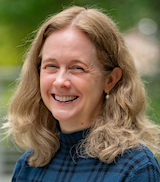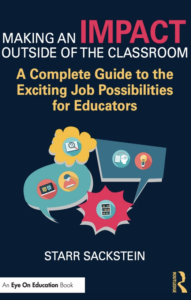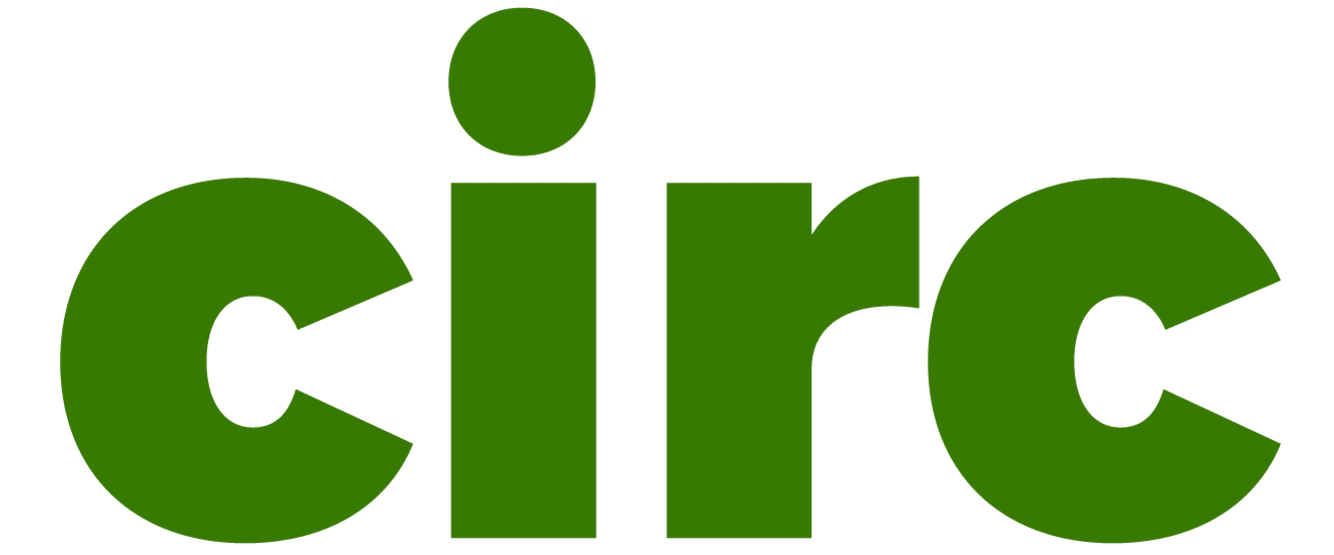Making an Impact Outside of the Classroom: A Complete Guide to the Exciting Job Possibilities for Educators
By Starr Sackstein
(Routledge/Eye On Education, 2025 – Learn more)
Reviewed by Sarah Cooper
 Although I’m not planning to leave the classroom anytime soon, or ever – I like the day-to-day rhythms and relationships of a school campus too much – Making an Impact Outside of the Classroom did make an impact on me.
Although I’m not planning to leave the classroom anytime soon, or ever – I like the day-to-day rhythms and relationships of a school campus too much – Making an Impact Outside of the Classroom did make an impact on me.
Sometimes just asking questions about next steps along the career path, with the help of an expert guide, can open up the world or make your current role brighter. And I’m not sure there’s a possibility that this book leaves unturned!
 The introduction and first chapter of the book will help anyone who has even entertained the idea of moving on. In “Preparing for the Future in an Evolving World,” Sackstein examines the complexities of why educators are leaving teaching, with a familiar litany: low pay, high workload and stress, lack of respect and recognition, lack of autonomy and creativity, limited career advancement, inadequate professional development, classroom management challenges, lack of resources, parent and community pressure, changing education policies, work-life balance, and lack of support.
The introduction and first chapter of the book will help anyone who has even entertained the idea of moving on. In “Preparing for the Future in an Evolving World,” Sackstein examines the complexities of why educators are leaving teaching, with a familiar litany: low pay, high workload and stress, lack of respect and recognition, lack of autonomy and creativity, limited career advancement, inadequate professional development, classroom management challenges, lack of resources, parent and community pressure, changing education policies, work-life balance, and lack of support.
Is now the time to leave?
More personally, in “To Leave or Not to Leave, That Is the Question,” Sackstein reads the minds of many teachers with “signposts” that might indicate that you want something different, whether a leadership position within schools or something outside of education entirely. Those signposts include boredom, restlessness, irritability, complacency, exhaustion or burnout, unwillingness to take risks, constant questioning about purpose in your current position, direct suggestion, change in life circumstances, increase in depression or anxiety, desire to go back to school or to continue your education to follow your passion, or your current place of employment no longer feels like home or maybe never has.
For each of these items, Sackstein reflects back how you might be feeling, with encouragements such as, “You acknowledge this isn’t the best version of yourself” and “Because you’ve excelled in the classroom for a long time, you think you could share your experience and knowledge with a team.”
Prepping for the search
The next chapter turns practical, asking in the title “What Happens Next? Seeing Opportunities in Real Time” and giving advice on everything from cover letters to job fairs. Chapter 3 on “Career Pathways” offers extensive comments from a survey Sackstein conducted of people who have left the classroom. Answers about their current titles range from “State Department of Education administrator” to “Health advocate,” with additional information that could spark your own career move.
The rest of the book’s chapters go into the nitty-gritty of how to transfer existing skills and gain new ones:
4. More Education?
5. School-Based or District-Based Options
6. Do I Want to Consult?
7. EdTech
8. Publishing [including podcasting and vlogging]
9. Social Media
10. School Law and Policy
11. Leaving a Legacy
Afterword: Courageously Restart
Reflecting on your pathway
Sackstein’s last two chapters encourage self-examination about impact and influence. They feel like a culmination of the reflection prompts that close each chapter, which include, “What risks are you willing to take as you make this move?” and “How has education changed over the course of your career and how have you stayed nimble within it?” These are not just teaching questions but existential ones that challenge us as people.
And in fact, Sackstein ends the book with a “call to action,” urging: “In the word of countless educators who have embarked on courageous restarts, let us heed the call to innovate, to persist in the face of challenges, to embrace lifelong learning, and to recognize the power of collective action.”
She is a reliable inspiration in this task, both with her realistic, approachable style and her very believable assertion that “[e]very success I have had has come as a result of a calculated risk I have taken.” It’s likely you’ll find yourself in conversation with Sackstein as you read, wondering if this is your time to take the risks she suggests.
Sarah J. Cooper teaches eighth-grade U.S. History and is Associate Head of School at Flintridge Prep in La Canada, California, where she has also taught English Language Arts. Sarah is the author of Making History Mine (Stenhouse, 2009) and Creating Citizens: Teaching Civics and Current Events in the History Classroom (Routledge, 2017). She presents at conferences and writes for a variety of educational sites. You can find all of Sarah’s writing at sarahjcooper.com.


